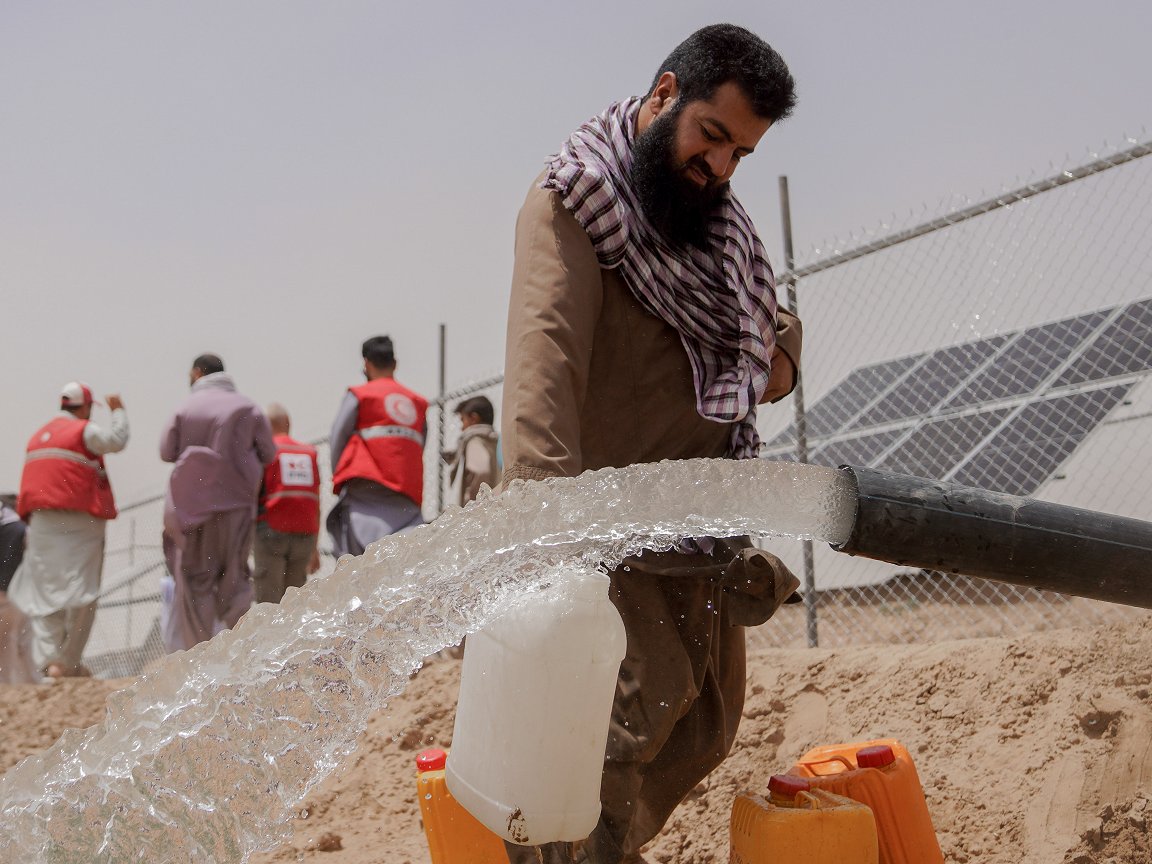
Adaptation in Afghanistan: solar-powered water supply

The Afghan Red Crescent has sunk ten new wells (01:15) fitted with solar-powered pumps for communities in Herat and Samangan provinces “for drinking, agriculture and greening”.
Supported by the IFRC and the Japanese Red Cross, the community-driven initiative is now providing safe water to some 4,000 households in the two provinces.
People are able to use the water for irrigation, increasing crop yields for both consumption and sale, the IFRC says.
“The affordable water, accessible within a short distance, also ensures households can meet one of the most basic human needs for health and well-being.
“Overall, the project aims to enhance community resilience in the face of climate change by making communities more resilient to the impacts of frequent climate shocks,” it adds.
In its country plan for Afghanistan, published last month, the IFRC notes that “recurring severe weather” is driving droughts and flash floods and heightening other hazards.
“These compounding issues increase poverty, drive irregular migration and strain resources, disproportionately affecting women and girls who face limited healthcare, education and economic opportunities,” according to the IFRC, which now sets its humanitarian funding requirement for the country at just over 62 million Swiss francs.
The UN said in 2023 that “the impact of climate change has been seriously underestimated” in Afghanistan, with drought “the most frequently reported shock experienced by households [there] increasing from 39 per cent in 2021 to 64 per cent in 2022.”
The IFRC and the Japanese Red Cross have assisted the Red Crescent in Afghanistan provide solar-powered wells for ten communities. (Video grab: Afghan Red Crescent)